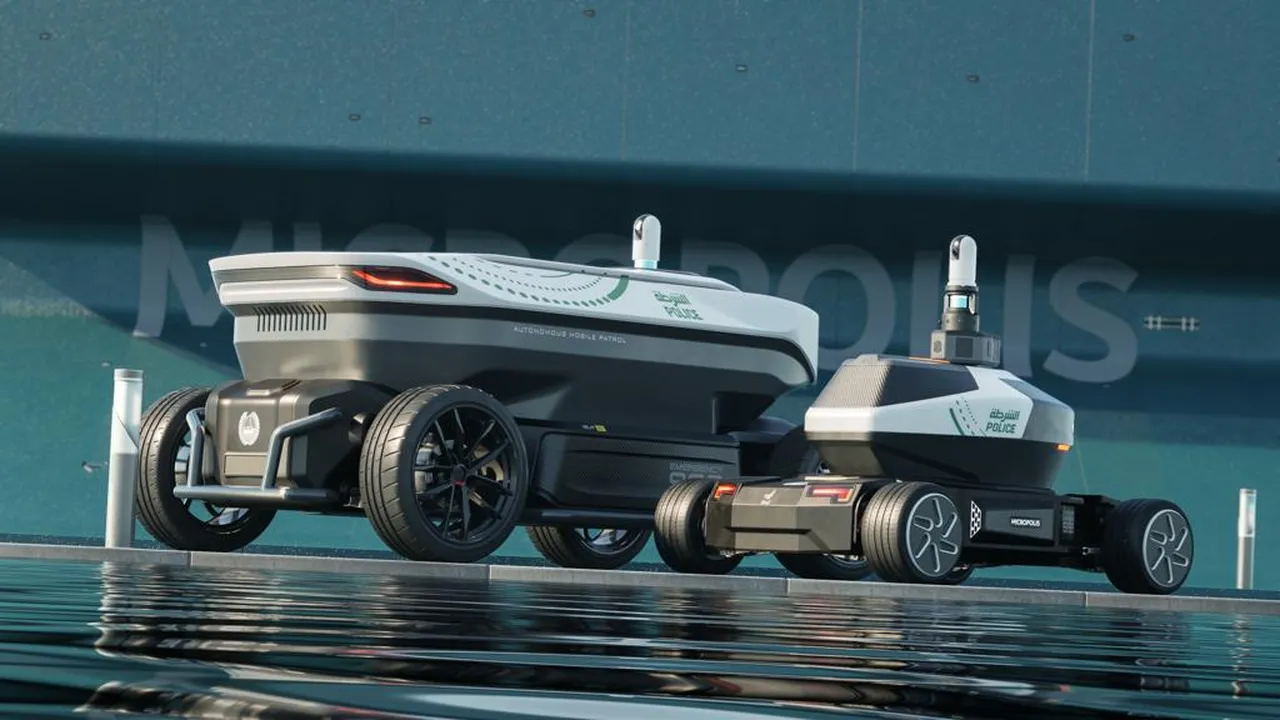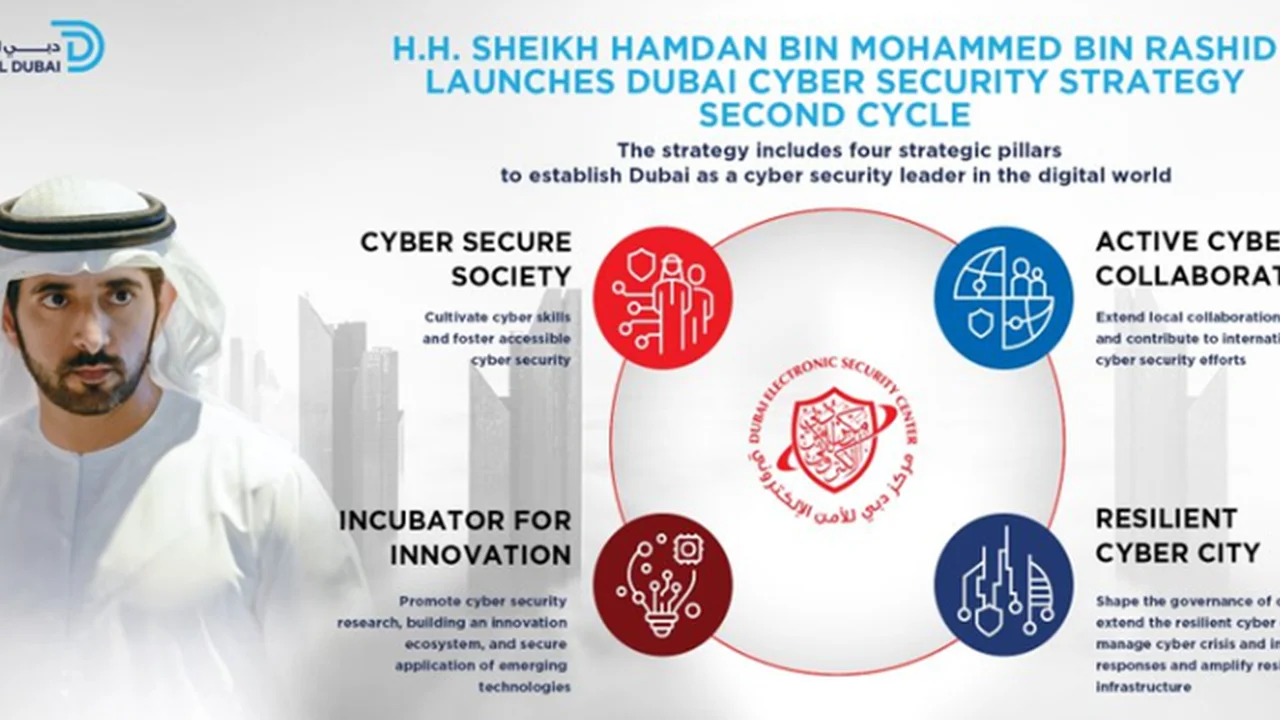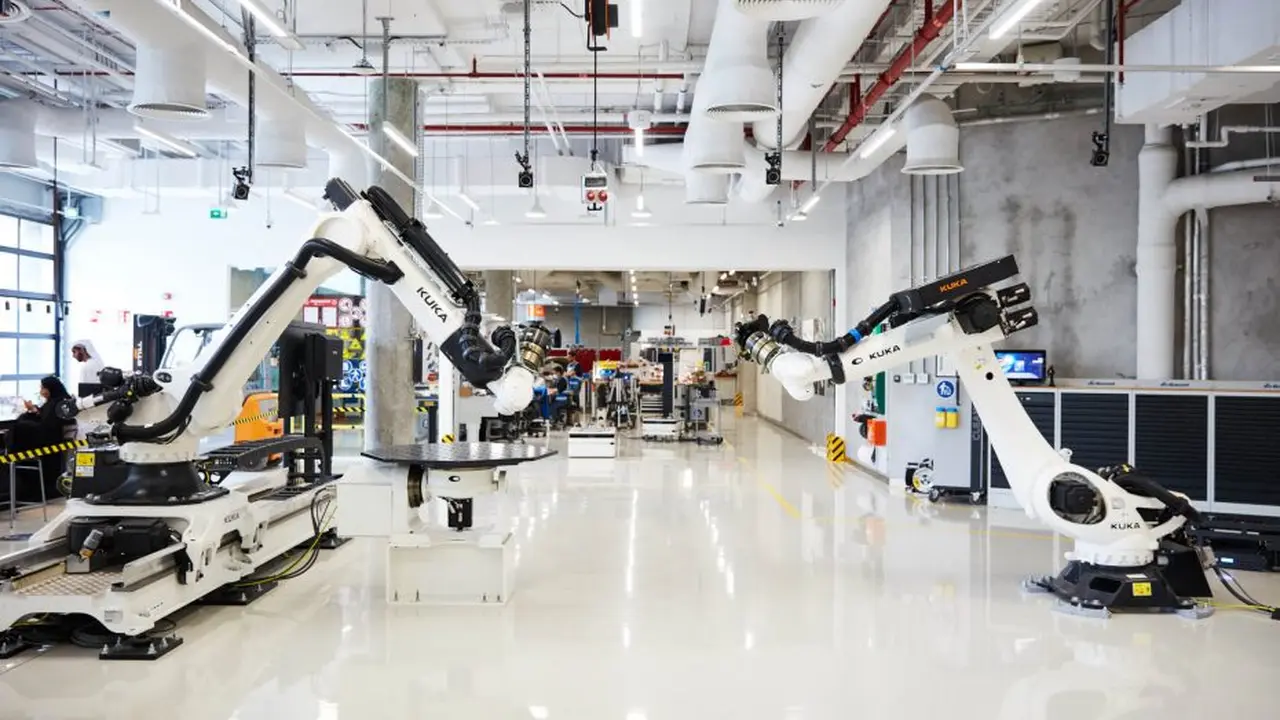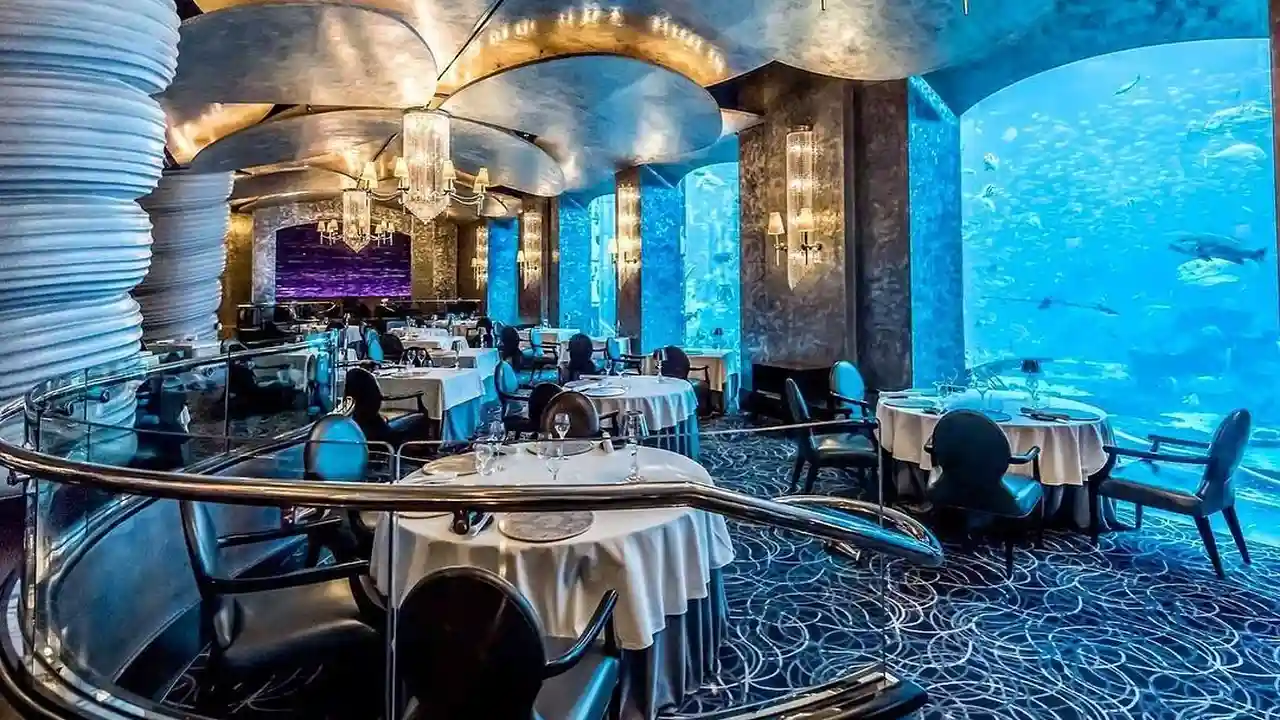7 Best Robot Applications in Dubai's Future

Introduction to Robotics and Dubai's Vision
Dubai, a city synonymous with innovation and futuristic ambition, has set its sights on becoming a global leader in robotics and artificial intelligence. This ambition is not merely aspirational; it's deeply embedded in the city's strategic plans, including the Dubai 2040 Urban Master Plan and the UAE Strategy for Artificial Intelligence. These initiatives outline a clear vision for integrating robotics across various sectors, aiming to enhance efficiency, improve quality of life, and drive economic growth. This article delves into seven of the most promising robot applications that are poised to shape Dubai's future, exploring their potential impact, real-world examples, and the underlying technologies driving their development.
Robotics in Construction and Infrastructure Development
Dubai's rapid infrastructure development is a testament to its ambitious growth. However, such large-scale projects demand efficiency, precision, and safety. This is where robotics steps in, offering solutions to streamline construction processes and address the challenges associated with traditional methods.
Automated Bricklaying and 3D Printing in Construction
One of the most promising applications is automated bricklaying. Robots equipped with advanced sensors and robotic arms can lay bricks with unparalleled speed and accuracy, reducing construction time and minimizing errors. Companies like Construction Robotics have developed systems like the SAM (Semi-Automated Mason) robot, which can lay bricks up to six times faster than a human mason. While SAM isn't readily available for purchase in Dubai, similar technologies are being explored and adapted for the local market.
3D printing in construction is another revolutionary application. Using specialized concrete mixtures and large-scale 3D printers, entire buildings can be constructed layer by layer. This method offers several advantages, including design flexibility, reduced material waste, and faster construction times. Dubai has already embraced 3D printing in construction, with projects like the Office of the Future, the world's first 3D-printed office building. Companies like Apis Cor, known for 3D printing entire houses, are actively exploring opportunities in Dubai.
Robotic Inspection and Maintenance of Infrastructure
Maintaining Dubai's vast infrastructure, including bridges, tunnels, and pipelines, is a continuous challenge. Robotic inspection and maintenance offer a cost-effective and safe solution. Robots equipped with cameras, sensors, and non-destructive testing equipment can inspect structures for cracks, corrosion, and other defects. These robots can access hard-to-reach areas, providing valuable data for predictive maintenance and preventing costly repairs. Companies like Flyability, specializing in confined space inspection drones, are increasingly relevant in Dubai's infrastructure maintenance sector.
Product Recommendation: For infrastructure inspection, consider using drones equipped with LiDAR and thermal imaging. The DJI Matrice 300 RTK with Zenmuse L1 LiDAR and Zenmuse H20T thermal camera provides detailed 3D models and thermal analysis for comprehensive infrastructure assessment. Pricing: The DJI Matrice 300 RTK system with the aforementioned payloads can range from $30,000 to $50,000 depending on configuration and accessories.
Robotics in Logistics and Supply Chain Management
Dubai's strategic location as a global trade hub makes logistics and supply chain management a critical sector. Robotics is playing an increasingly important role in optimizing these processes, enhancing efficiency, and reducing costs.
Automated Warehouses and Sorting Systems
Automated warehouses are transforming the way goods are stored, retrieved, and sorted. Robots, such as Automated Guided Vehicles (AGVs) and Autonomous Mobile Robots (AMRs), can navigate warehouses autonomously, picking and placing items with precision. These robots are equipped with sensors and software that allow them to avoid obstacles and optimize routes. Companies like GreyOrange and Locus Robotics offer warehouse automation solutions that are gaining traction in Dubai's logistics sector.
Automated sorting systems further enhance efficiency by sorting packages and parcels based on destination, size, and other criteria. These systems use conveyor belts, robotic arms, and computer vision to quickly and accurately sort items, reducing manual labor and minimizing errors. Companies like Siemens and Vanderlande offer sophisticated sorting solutions that are being implemented in Dubai's distribution centers.
Last-Mile Delivery Robots and Drones
The last mile of delivery, the final leg of the journey from the distribution center to the customer's doorstep, is often the most challenging and expensive part of the supply chain. Last-mile delivery robots and drones offer a potential solution to this problem. These autonomous vehicles can navigate city streets and deliver packages directly to customers, reducing delivery times and costs. While regulations surrounding drone delivery are still evolving in Dubai, several companies are testing and piloting these technologies.
Product Comparison: When choosing between AGVs and AMRs for warehouse automation, consider the level of flexibility required. AGVs follow pre-defined paths, while AMRs can navigate dynamically. For a highly structured environment with repetitive tasks, AGVs might be suitable. For a more dynamic environment with changing layouts, AMRs offer greater adaptability. Companies like Mobile Industrial Robots (MiR) offer a range of AMRs suited for various warehouse applications. Pricing: MiR robots can range from $20,000 to $70,000 depending on size and payload capacity.
Robotics in Healthcare and Medical Assistance
Dubai's commitment to providing world-class healthcare is driving the adoption of robotics in medical settings. Robots are being used to assist surgeons, dispense medication, and provide rehabilitation therapy, improving patient outcomes and enhancing the efficiency of healthcare professionals.
Surgical Robots and Robotic-Assisted Surgery
Surgical robots offer surgeons enhanced precision, dexterity, and control during complex procedures. These robots are equipped with miniature cameras and instruments that allow surgeons to operate through small incisions, minimizing trauma and reducing recovery times. The da Vinci Surgical System, developed by Intuitive Surgical, is one of the most widely used surgical robots. While the da Vinci system is prevalent in many leading hospitals globally, its adoption in Dubai is growing, requiring specialized training and infrastructure.
Robotic-assisted surgery is being used in a variety of specialties, including urology, gynecology, and cardiology. The benefits of robotic-assisted surgery include reduced blood loss, shorter hospital stays, and faster recovery times. However, it's crucial to note that the surgeon remains in control of the robot at all times.
Robotic Medication Dispensing and Pharmacy Automation
Robotic medication dispensing systems are automating the process of filling prescriptions, reducing errors and improving efficiency in pharmacies. These systems use robotic arms and barcode scanners to accurately select and dispense medications, ensuring that patients receive the correct dosage. Companies like Swisslog Healthcare offer pharmacy automation solutions that are being implemented in hospitals and pharmacies in Dubai.
Robotic Rehabilitation and Therapy
Robotic rehabilitation devices are assisting patients in regaining lost motor function after strokes, spinal cord injuries, and other neurological conditions. These devices use sensors and actuators to provide personalized therapy, helping patients to improve their strength, coordination, and range of motion. Companies like Hocoma offer a range of robotic rehabilitation devices that are being used in rehabilitation centers in Dubai.
Detailed Information: The da Vinci Surgical System utilizes EndoWrist technology, mimicking the natural movements of the human wrist but with greater precision and range of motion. This allows surgeons to perform complex procedures through small incisions, resulting in less pain and faster recovery for patients. Pricing: The da Vinci Surgical System costs approximately $2 million, with annual maintenance fees ranging from $100,000 to $200,000.
Robotics in Security and Surveillance
Maintaining safety and security is a top priority for Dubai. Robotics is playing an increasingly important role in enhancing surveillance capabilities, patrolling public spaces, and responding to emergencies.
Autonomous Security Robots and Patrol Systems
Autonomous security robots are patrolling public spaces, such as shopping malls, airports, and residential areas, providing 24/7 surveillance. These robots are equipped with cameras, sensors, and communication systems that allow them to detect suspicious activity and alert security personnel. They can also be programmed to follow specific routes and respond to alarms. Companies like Knightscope offer autonomous security robots that are being deployed in various locations around the world, and their solutions are being considered for implementation in Dubai.
Robotic Bomb Disposal and Hazardous Material Handling
Robotic bomb disposal robots are used to safely disarm and dispose of explosive devices, protecting human lives. These robots are equipped with cameras, sensors, and manipulators that allow them to remotely inspect and dismantle bombs. They are also used to handle hazardous materials, such as chemicals and radioactive substances, minimizing the risk to human operators. Companies like QinetiQ North America offer robotic bomb disposal robots that are used by law enforcement agencies and military organizations worldwide.
Drone-Based Surveillance and Monitoring
Drones are being used for a variety of surveillance and monitoring applications, including border patrol, infrastructure inspection, and traffic management. Drones equipped with high-resolution cameras and thermal sensors can provide real-time aerial imagery, allowing security personnel to quickly assess situations and respond to emergencies. Regulations surrounding drone usage are strict in Dubai, requiring permits and adherence to specific flight zones.
Use Case: Security robots can be equipped with facial recognition technology to identify known criminals or individuals on watchlists. This enhances security by proactively identifying potential threats and alerting security personnel. However, the use of facial recognition technology raises privacy concerns, and it's important to implement appropriate safeguards to protect individual rights. Product Recommendation: The Knightscope K5 robot is a popular choice for security patrols. It offers 360-degree video recording, thermal imaging, and license plate recognition capabilities. Pricing: Knightscope K5 robots are typically leased for around $7,000 per month.
Robotics in Tourism and Hospitality
Dubai's thriving tourism and hospitality industry is constantly seeking innovative ways to enhance the guest experience. Robotics is playing an increasingly important role in providing personalized services, automating tasks, and creating unique attractions.
Robotic Concierges and Hotel Staff
Robotic concierges are greeting guests, providing information, and assisting with check-in and check-out procedures. These robots can communicate in multiple languages and are programmed to answer common questions about the hotel and the surrounding area. They can also escort guests to their rooms and provide other personalized services. Several hotels in Dubai are experimenting with robotic concierges to enhance the guest experience and reduce staff workload.
Robotic Bartenders and Food Service
Robotic bartenders are mixing cocktails and serving drinks at bars and restaurants. These robots can precisely measure ingredients and create a wide variety of drinks, providing a consistent and efficient service. They can also interact with customers and provide entertainment. Robotic food service robots are delivering meals to tables and clearing dishes, reducing the workload for human servers. Costa Coffee has already implemented robotic baristas in some locations in Dubai.
Robotic Entertainment and Attractions
Robots are being used to create unique entertainment attractions, such as robotic dance performances and interactive exhibits. These attractions are drawing crowds and enhancing Dubai's reputation as a city of innovation. Theme parks and entertainment venues are increasingly incorporating robots into their shows and attractions.
Detailed Information: The Yanu robotic bartender can prepare up to 100 different cocktails per hour and accepts payment via contactless methods. It also tracks inventory and provides real-time data on drink preferences. Pricing: The Yanu robotic bartender costs approximately $150,000.
Robotics in Agriculture and Vertical Farming
Dubai's arid climate presents challenges for agriculture. Robotics is playing an increasingly important role in developing sustainable farming practices, maximizing crop yields, and reducing water consumption.
Automated Planting and Harvesting
Robots are being used to automate the planting and harvesting of crops, reducing labor costs and improving efficiency. These robots are equipped with sensors and computer vision that allow them to identify and select ripe crops. They can also be programmed to plant seeds and apply fertilizer with precision. Companies like Iron Ox are developing fully automated farming systems that are being explored for potential implementation in Dubai.
Robotic Irrigation and Water Management
Robots are being used to optimize irrigation and water management, reducing water consumption and maximizing crop yields. These robots use sensors to monitor soil moisture levels and adjust irrigation accordingly. They can also detect leaks and other problems in irrigation systems. Drones equipped with multispectral cameras can also assess plant health and identify areas that need more water or fertilizer.
Vertical Farming and Controlled Environment Agriculture
Vertical farming, growing crops in vertically stacked layers indoors, is gaining traction in Dubai as a way to produce food locally and sustainably. Robots are playing an important role in automating tasks such as planting, harvesting, and monitoring environmental conditions in vertical farms. Controlled environment agriculture (CEA) uses sensors and automation to optimize temperature, humidity, and lighting, creating ideal growing conditions for crops. Companies like AeroFarms are pioneers in vertical farming and are exploring opportunities in the UAE.
Product Recommendation: For robotic irrigation, consider using soil moisture sensors connected to an automated irrigation system. The sensors monitor soil moisture levels and trigger irrigation only when needed, reducing water waste. Companies like Sentek offer a range of soil moisture sensors suitable for various crops and soil types. Pricing: Soil moisture sensors can range from $100 to $500 per sensor, depending on accuracy and features.
Robotics in Environmental Monitoring and Conservation
Dubai is committed to protecting its environment and promoting sustainability. Robotics is playing an increasingly important role in monitoring air and water quality, tracking wildlife populations, and cleaning up pollution.
Autonomous Underwater Vehicles (AUVs) for Marine Monitoring
Autonomous underwater vehicles (AUVs) are being used to monitor marine ecosystems, track pollution levels, and inspect underwater infrastructure. These robots are equipped with sensors that can measure temperature, salinity, and other water quality parameters. They can also collect samples of water and sediment for analysis. Companies like Kongsberg Maritime offer AUVs that are used for a variety of marine monitoring applications.
Drones for Air Quality Monitoring and Pollution Detection
Drones equipped with air quality sensors are being used to monitor air pollution levels and identify sources of pollution. These drones can collect data on particulate matter, ozone, and other pollutants. They can also be used to inspect industrial facilities and identify potential sources of emissions. Dubai Municipality is actively using drones for air quality monitoring.
Robotic Waste Management and Recycling
Robots are being used to automate waste management and recycling processes, improving efficiency and reducing the amount of waste that ends up in landfills. These robots can sort recyclables, compact waste, and even convert waste into energy. Companies like ZenRobotics offer robotic waste sorting systems that are being implemented in recycling facilities around the world.
Use Case: AUVs can be used to monitor coral reefs and assess the impact of climate change and pollution. They can collect data on coral health, water temperature, and other factors that affect coral reef ecosystems. This information can be used to develop strategies for protecting and restoring coral reefs. Product Comparison: When choosing an AUV, consider the depth rating, battery life, and sensor payload capacity. AUVs designed for shallow water applications are typically less expensive than those designed for deep-sea exploration. Companies like Blue Robotics offer affordable AUVs for research and educational purposes. Pricing: Entry-level AUVs can range from $5,000 to $20,000, while more sophisticated models can cost upwards of $100,000.
:max_bytes(150000):strip_icc()/277019-baked-pork-chops-with-cream-of-mushroom-soup-DDMFS-beauty-4x3-BG-7505-5762b731cf30447d9cbbbbbf387beafa.jpg)






